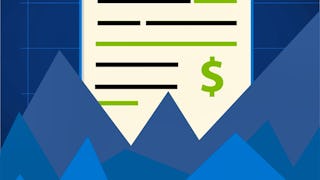Unlock the power of numbers in business! In this Operational Finance course, you'll learn to interpret the 'financial story' told by balance sheets and income statements, gaining insights crucial for short-term decision-making. Master the management of current assets, liabilities, and working capital to optimize business performance. Understand the financial impact of managerial decisions on operations and marketing, making you a more strategic leader.



Finance for Managers
This course is part of multiple programs.

Instructor: Miguel Antón
Access provided by ����vlog�����ۿ� Learning Team
46,739 already enrolled
(1,036 reviews)
Skills you'll gain
Details to know

Add to your LinkedIn profile
See how employees at top companies are mastering in-demand skills

Build your subject-matter expertise
- Learn new concepts from industry experts
- Gain a foundational understanding of a subject or tool
- Develop job-relevant skills with hands-on projects
- Earn a shareable career certificate

There are 4 modules in this course
Welcome to Operational Finance: Finance for Managers. In this course you will learn the basics of operational finance to help you make sound financial decision or to run a robust business! Before you get started with this week's video content, please have a look at the course syllabus. In this first module, we'll discuss what operational finance is all about by looking at a business case. What do the numbers on the Balance Sheet and P&L Statement tell us about its performance and future prospects? If you were a bank, would you approve a half million euro loan for this business? Why or why not?
What's included
16 videos6 readings1 assignment1 peer review3 plugins
In module 1, we looked at Polypanel’s Balance Sheet and P&L Statement. In the Balance Sheet, we noted that receivables increased from €188,000 in 2004 to €649,000 in 2007. We left off with the question: Is this difference due to an increase in sales or delays in payments from customers?In week 2, we will introduce operational ratios, the tools we need to disentangle both effects and understand what’s going on below the surface. We will also conduct a forecasting exercise of Polypanel to understand how well it will be positioned to pay back a potential credit line in the future. Objectives: By the end of the module you will understand the different types of operational ratios (Days of Collection, Days of Inventory and Days of Payables) in order to analyze how well a business is performing. You will also learn how to use forecasting to support financing decisions.
What's included
14 videos4 readings1 assignment1 peer review1 plugin
By now you have a pretty good grasp of the Polypanel case and the main issues that could impact future financing. This week, it’s time to roll up our sleeves and work out a diagnosis for these issues. We’ll discuss Need of Funds for Operations (NFO) and Working Capital (WC), two concepts that will help us better understand the company’s problems. Finally, with a solid diagnosis we can develop an action plan that will lead to sustainable growth. Objectives: By the end of the module you will have a framework for diagnosing a company’s financial health. You’ll also gain insights into how to develop an action plan to address its problems.
What's included
13 videos3 readings1 assignment1 peer review1 plugin
In this final module, we will introduce the final pieces of the puzzle to give you a complete overview of operational finance. We’ll discuss tools like sensitivity analysis that will help you consider the potential outcome of a decision given different variables. In this session we will also look at other crucial concerns for the firm and its shareholders like sustainable growth and ROE (Return On Equity) plus revisit NFO (Need of Funds for Operations) and other topics. Objectives: By the end of this module, you should have a complete overview of the key aspects of operational finance. You will also understand what tools financial professionals use in order to make decisions to strengthen a company’s position.
What's included
16 videos3 readings1 assignment1 peer review1 plugin
Earn a career certificate
Add this credential to your LinkedIn profile, resume, or CV. Share it on social media and in your performance review.
Instructor

Offered by
Why people choose ����vlog�����ۿ� for their career




Learner reviews
1,036 reviews
- 5 stars
86.69%
- 4 stars
11.47%
- 3 stars
1.06%
- 2 stars
0.28%
- 1 star
0.48%
Showing 3 of 1036
Reviewed on Aug 14, 2020
Excellent approach to training by sharing the Financial conceptual knowledge using a a Business case scenario... very involving and thought provoking.. Really appreciate ...Many Thanks!
Reviewed on Sep 2, 2020
Great course. Really get a grip of the basics of Finance. Especially ones that you will find working in other functions (such as Sales, Marketing, PM, etc...)
Reviewed on May 27, 2019
Fantastic course, such a well laid out structure, Miguel sir explained with such enthusiasm, especially the case with Working Capital as to why it's not an asset. An excellent course!!!
Explore more from Business

Emory University

Duke University

University of Colorado Boulder

Duke University
¹ Some assignments in this course are AI-graded. For these assignments, your data will be used in accordance with ����vlog�����ۿ�'s Privacy Notice.

